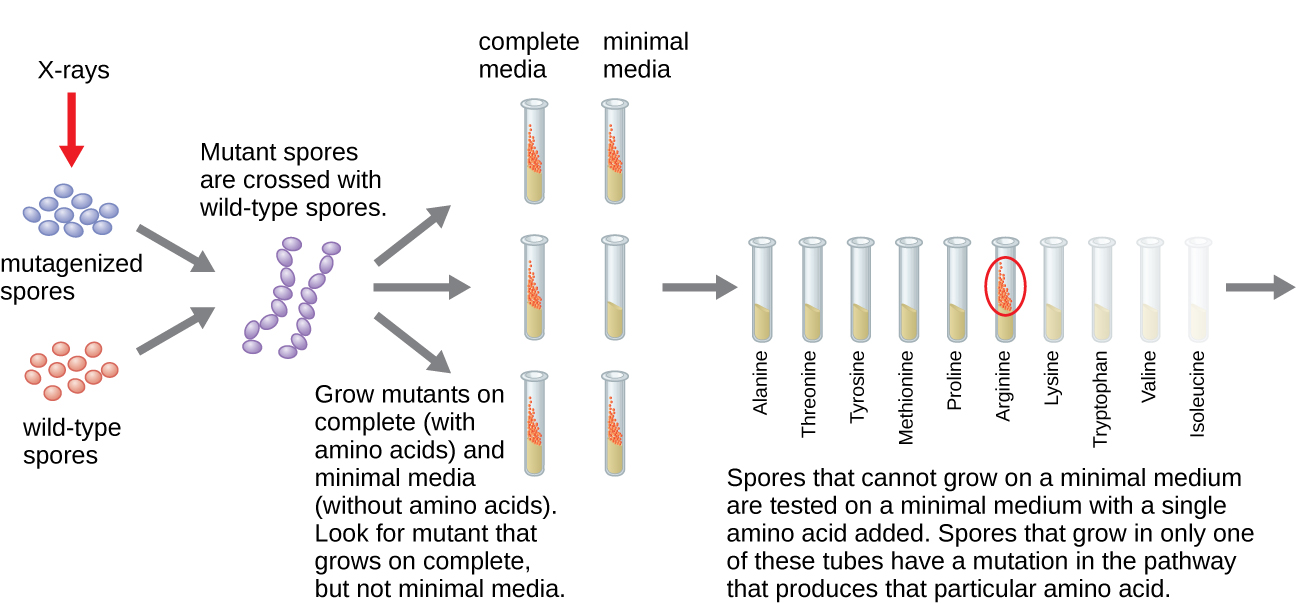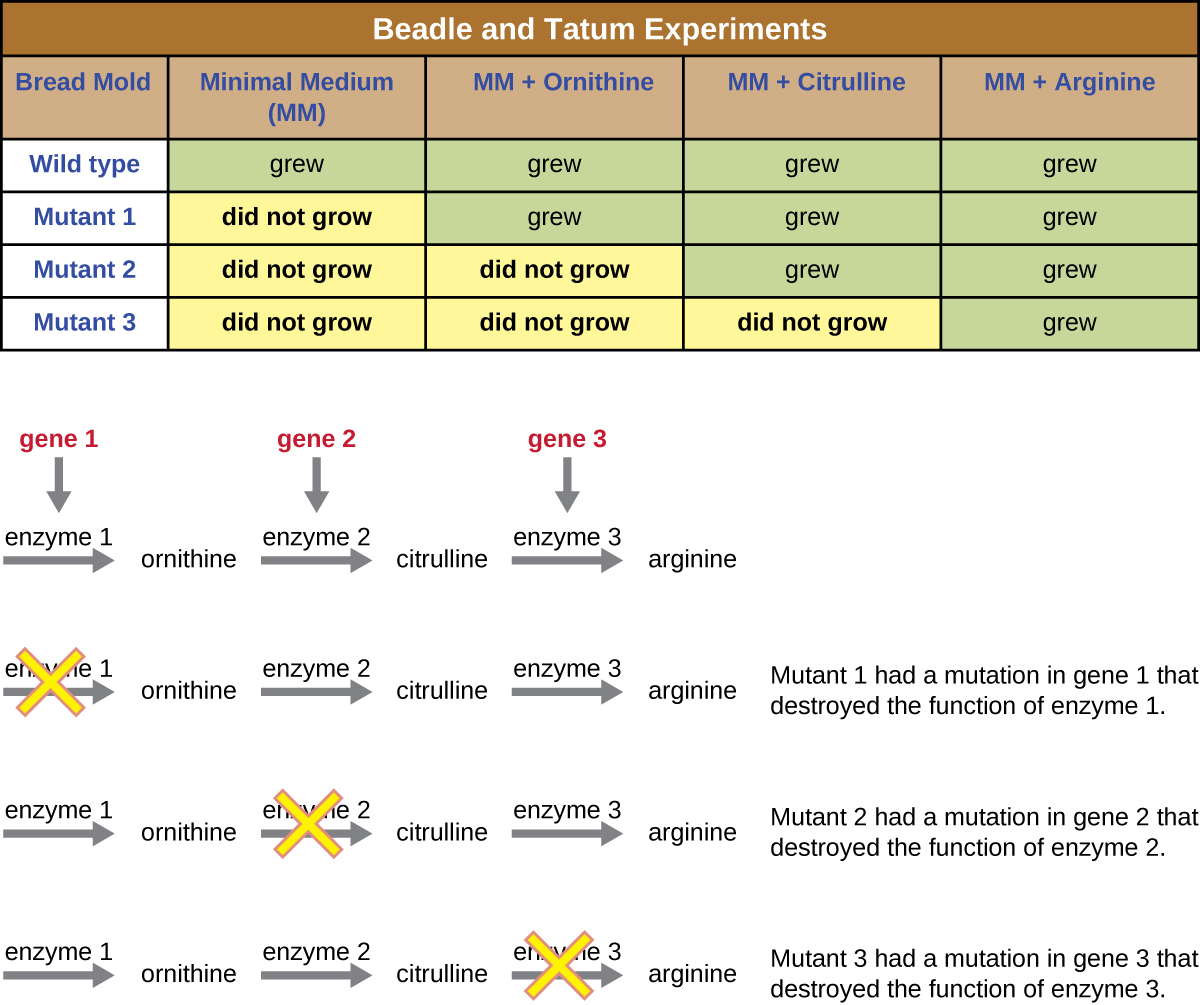| << Chapter < Page | Chapter >> Page > |
Beadle and Tatum irradiated the mold with X-rays to induce changes to a sequence of nucleic acids, called mutations . They mated the irradiated mold spores and attempted to grow them on both a complete medium and a minimal medium. They looked for mutants that grew on a complete medium, supplemented with vitamins and amino acids, but did not grow on the minimal medium lacking these supplements. Such molds theoretically contained mutations in the genes that encoded biosynthetic pathways. Upon finding such mutants, they systematically tested each to determine which vitamin or amino acid it was unable to produce ( [link] ) and published this work in 1941. G.W. Beadle, E.L. Tatum. “Genetic Control of Biochemical Reactions in Neurospora.” Proceedings of the National Academy of Sciences 27 no. 11 (1941):499–506.

Subsequent work by Beadle, Tatum, and colleagues showed that they could isolate different classes of mutants that required a particular supplement, like the amino acid arginine ( [link] ). With some knowledge of the arginine biosynthesis pathway, they identified three classes of arginine mutants by supplementing the minimal medium with intermediates (citrulline or ornithine) in the pathway. The three mutants differed in their abilities to grow in each of the media, which led the group of scientists to propose, in 1945, that each type of mutant had a defect in a different gene in the arginine biosynthesis pathway. This led to the so-called one gene–one enzyme hypothesis , which suggested that each gene encodes one enzyme.
Subsequent knowledge about the processes of transcription and translation led scientists to revise this to the “one gene–one polypeptide” hypothesis. Although there are some genes that do not encode polypeptides (but rather encode for transfer RNAs [tRNAs] or ribosomal RNAs [rRNAs], which we will discuss later), the one gene–one enzyme hypothesis is true in many cases, especially in microbes. Beadle and Tatum’s discovery of the link between genes and corresponding characteristics earned them the 1958 Nobel Prize in Physiology and Medicine and has since become the basis for modern molecular genetics.

To learn more about the experiments of Beadle and Tatum, visit this website from the DNA Learning Center.

Notification Switch
Would you like to follow the 'Microbiology' conversation and receive update notifications?